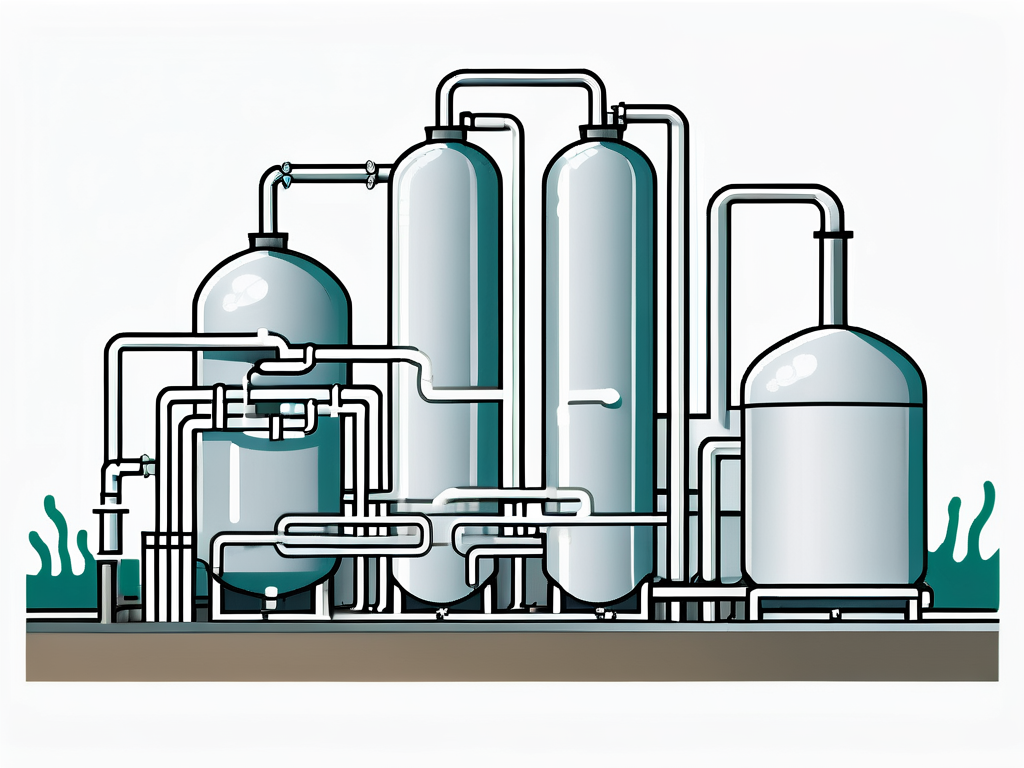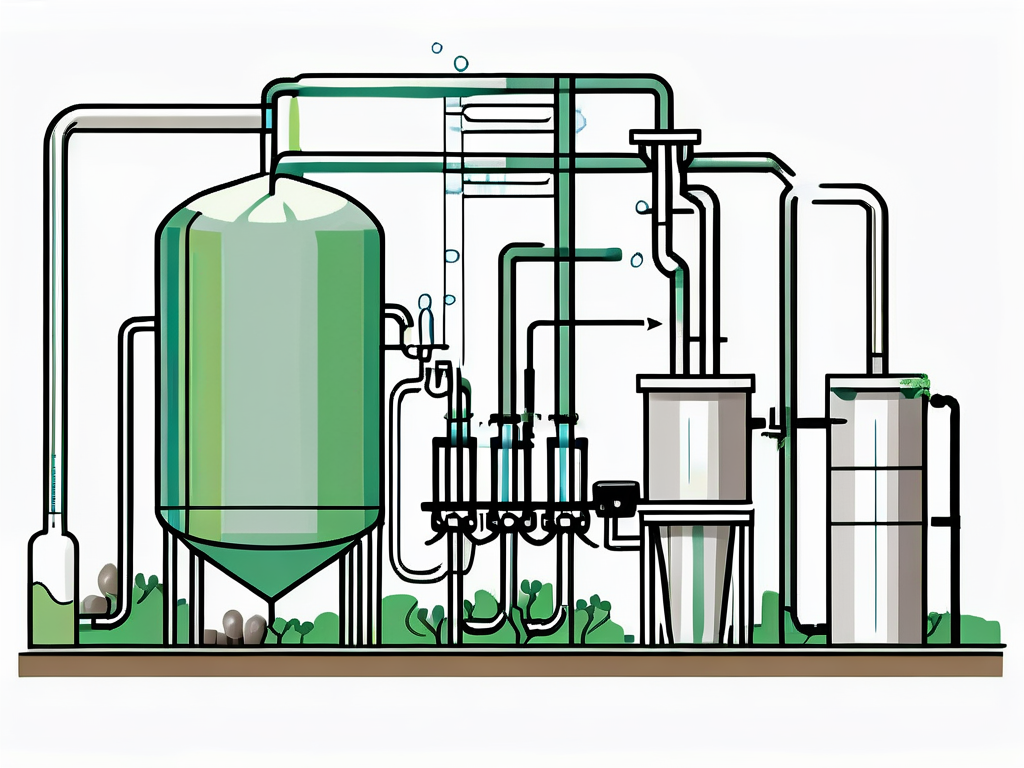
Biological Nutrient Removal: Wastewater Treatment Explained
Biological Nutrient Removal (BNR) is a critical process in wastewater treatment, designed to remove harmful nutrients, particularly nitrogen and phosphorus, from wastewater before it is discharged back into the environment. This process is essential in preventing the over-enrichment of water bodies, a phenomenon known as eutrophication, which can lead to the excessive growth of algae and other aquatic plants, disrupting the normal functioning of the ecosystem and causing significant environmental damage.
The BNR process involves a series of biological reactions carried out by various types of bacteria under different environmental conditions. These reactions transform the nutrients in the wastewater into forms that can be easily separated and removed. This article provides a comprehensive glossary of the key terms and concepts related to BNR, aiming to provide a clear and detailed understanding of this complex process.
Understanding Wastewater
Wastewater is any water that has been adversely affected in quality by anthropogenic influence. It can originate from a combination of domestic, industrial, commercial or agricultural activities, stormwater runoff or sewer inflow or infiltration. The composition of wastewater varies widely depending on the source, but it typically contains a mixture of water, organic material, nutrients, pathogens, and various chemical substances.

One of the primary goals of wastewater treatment is to remove these contaminants to a level that the water can be safely discharged back into the environment, or reused for various purposes. The specific treatment processes used can vary depending on the nature and concentration of the contaminants, but they generally involve a combination of physical, chemical, and biological methods.
Types of Wastewater
There are three main types of wastewater: blackwater, greywater, and yellow water. Blackwater is wastewater from toilets, which contains feces, urine, water, and toilet paper. It is highly contaminated and requires extensive treatment before it can be safely discharged or reused.
Greywater is wastewater from sinks, showers, baths, washing machines, and dishwashers. It is less contaminated than blackwater, but still contains a significant amount of organic material and nutrients. Yellow water is urine and contains a high concentration of nutrients, particularly nitrogen and phosphorus, which can be valuable resources if recovered properly.
Wastewater Treatment Processes
Wastewater treatment involves a series of processes designed to remove or reduce the concentration of contaminants in the wastewater. The specific processes used can vary depending on the nature and concentration of the contaminants, but they generally involve a combination of physical, chemical, and biological methods.
Physical treatment processes are designed to remove solid materials from the wastewater. This can include screening to remove large objects, sedimentation to allow smaller particles to settle out, and filtration to remove even smaller particles. Chemical treatment processes involve the use of chemicals to remove or neutralize contaminants. This can include coagulation and flocculation to cause particles to clump together and settle out, disinfection to kill pathogens, and chemical precipitation to remove specific contaminants.
Biological Nutrient Removal (BNR)
Biological Nutrient Removal (BNR) is a process used in wastewater treatment to remove excess nutrients, particularly nitrogen and phosphorus, from the wastewater. These nutrients can cause significant environmental problems if they are discharged into water bodies, including the overgrowth of algae and other aquatic plants, a phenomenon known as eutrophication.

BNR involves a series of biological reactions carried out by various types of bacteria under different environmental conditions. These reactions transform the nutrients in the wastewater into forms that can be easily separated and removed. The specific processes used in BNR can vary depending on the nature and concentration of the nutrients, but they generally involve a combination of nitrification, denitrification, and phosphorus removal processes.
Nitrification
Nitrification is a two-step aerobic process in which ammonia (NH3) is first oxidized to nitrite (NO2-) by ammonia-oxidizing bacteria (AOB), and then further oxidized to nitrate (NO3-) by nitrite-oxidizing bacteria (NOB). This process requires oxygen and a suitable substrate (ammonia), and is typically carried out in an aerobic reactor in the wastewater treatment plant.
The end product of nitrification, nitrate, is a stable and soluble form of nitrogen that can be easily removed from the wastewater by denitrification or used as a nutrient in agricultural irrigation. However, it is also a potent greenhouse gas and a major contributor to global warming, so its release into the atmosphere must be carefully controlled.
Denitrification
Denitrification is an anaerobic process in which nitrate (NO3-) is reduced to nitrogen gas (N2) by denitrifying bacteria. This process requires a carbon source (usually organic matter in the wastewater) and an absence of oxygen, and is typically carried out in an anoxic reactor in the wastewater treatment plant.
The end product of denitrification, nitrogen gas, is a harmless and inert gas that makes up about 78% of the Earth's atmosphere. Therefore, denitrification is an effective and environmentally friendly way to remove nitrogen from wastewater. However, it also produces nitrous oxide (N2O), a potent greenhouse gas, as a byproduct, so its emissions must be carefully controlled.
Phosphorus Removal
Phosphorus removal is another important process in BNR. Phosphorus is a key nutrient for plant growth, but its excessive presence in water bodies can lead to eutrophication. Therefore, it is important to remove as much phosphorus as possible from wastewater before it is discharged.
There are two main methods for phosphorus removal in wastewater treatment: chemical precipitation and biological phosphorus removal. Chemical precipitation involves the addition of a chemical coagulant, such as alum or iron salts, which reacts with the phosphorus to form an insoluble precipitate that can be easily separated from the water. However, this method can be expensive and generate a significant amount of sludge.
Biological Phosphorus Removal
Biological phosphorus removal is a more sustainable and cost-effective method for phosphorus removal. It involves the use of certain types of bacteria, known as polyphosphate-accumulating organisms (PAOs), which can accumulate large amounts of phosphorus inside their cells.
These bacteria take up phosphorus from the wastewater during the aerobic phase of the treatment process, and store it as polyphosphate granules inside their cells. During the anaerobic phase, they release the stored phosphorus back into the water, where it can be removed by sedimentation or filtration.
Challenges and Future Directions
Despite the significant advances in BNR technology, there are still many challenges to be addressed. One of the main challenges is the high energy consumption of the BNR process, particularly the aeration required for nitrification. There is also a need for better control strategies to optimize the performance of the BNR process and reduce its environmental impact.
Future research in this field is likely to focus on developing more energy-efficient and sustainable BNR processes, such as anaerobic ammonia oxidation (anammox) and nitritation-denitritation. There is also a growing interest in resource recovery from wastewater, including the recovery of nutrients and energy, which could help to offset the costs of wastewater treatment and provide additional environmental benefits.
Energy Efficiency
Improving the energy efficiency of the BNR process is a key research priority. This could involve optimizing the aeration process to reduce the amount of energy required for nitrification, or developing new processes that can remove nitrogen under anaerobic or anoxic conditions, thereby eliminating the need for aeration.
One promising approach is the anammox process, which involves the anaerobic oxidation of ammonia to nitrogen gas by anammox bacteria. This process requires less energy than conventional nitrification and denitrification, and produces less greenhouse gas emissions. However, it is still at an early stage of development and further research is needed to make it commercially viable.
Resource Recovery
Resource recovery from wastewater is another important research area. This involves the recovery of valuable resources from the wastewater, such as nutrients and energy, which can be reused or sold to offset the costs of wastewater treatment.
Nutrient recovery involves the extraction of nutrients, particularly nitrogen and phosphorus, from the wastewater for use as fertilizers. This can be achieved through various methods, such as struvite precipitation or ammonia stripping. Energy recovery involves the conversion of the organic matter in the wastewater into energy, either through anaerobic digestion to produce biogas, or through thermal processes to produce heat and electricity.
Conclusion
Biological Nutrient Removal is a complex but essential process in wastewater treatment, designed to remove harmful nutrients from wastewater and protect our water bodies from eutrophication. While significant advances have been made in this field, there are still many challenges to be addressed and opportunities to be explored.
With the increasing pressure on our water resources and the growing recognition of the value of wastewater as a resource, the importance of BNR and wastewater treatment in general is likely to continue to grow in the future. Therefore, it is essential for us to continue to improve our understanding of this process and develop more efficient and sustainable BNR technologies.



